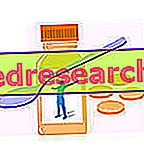What is Andropause?
Andropause is a term coined in recent times to indicate the natural depletion of male reproductive capacities in old age. This neologism recalls female menopause quite clearly, even if the suffix "pause" is badly suited to the decline of man's procreative abilities. The typical hormonal profile of an individual in andropause is established in a way that is anything but drastic, obvious or sudden, while in women menopause is a well-defined process, a mandatory step that begins with the disappearance of the menstrual cycle and is accompanied by a rapid drop in estrogen production.

For the man we cannot therefore speak to all the effects of true and proper "cessation" of the reproductive capacities; rather, the andropause should be described as a paraphysiological process (therefore in many respects normal), which manifests itself with extreme variability in the population. The term, no doubt, gives the idea, but precisely because of these considerations the very existence of the andropause was for a long time, and often still today, challenged.
The "true" andropause, understood as the complete loss of procreative capacity, does not manifest itself in all men, but only in a limited number of individuals; it is in fact a subjective phenomenon, since numerous environmental factors (overweight, sedentariness, smoking and various types of excess) can substantially affect male fertility. In the medical community, with reference to the andropause, it is therefore preferable to speak of PADAM, an Anglo-Saxon acronym derived from " Partial Androgen Deficiency in Aging Male ", or " partial androgen deficiency syndrome in old age ". Other authors, less permessive, eliminate the character of partiality and simply speak of ADAM ( Androgen Deficiency in Aging Male or androgenic insufficiency in old age).
The ANDROPAUSE, even if understood in its broader meaning, is NOT a disease, but a paraphysiological process that manifests itself with extreme variability.
Article Index
Causes of andropause and risk factors. Andropausa consequences and symptoms. Andropause diagnosis. Andropause therapyCauses of andropause
Testosterone drop
The inevitable aging phenomenon is accompanied by a progressive decline in testosteronemia, that is, serum testosterone levels. This decline is actually rather slow and progressive, beginning inexorably at around 25/30 years of age and correlating inversely with BMI. In other words, the more serious one's overweight condition is, the greater the chance that the andropause will knock at the door, even at a relatively early age. The risk, in particular, becomes consistent from the sixth decade of life onwards.

In humans, testosterone synthesis is entrusted to Leydig's testicular cells, whose numerical reduction is typically related to andropause; not surprisingly, the testicular volume of an elderly person is normally reduced compared to that of a young subject. Even the pituitary center that directs the synthesis of testosterone through the release of LH may prove deficient. In particular, the decreased amplitude of the pulsatility of this hormone - in turn controlled by the hypothalamic GnRH (hormone for the release of gonadotropins) - is typical of senescence. Let us briefly recall that pulsatility is that phenomenon in which a hormone is not secreted in a constant manner over time, but in waves of varying intensity and amplitude, repeated at more or less regular time intervals (in women the GnRH pulsatility is strongly correlated to the various phases of the menstrual cycle, while in humans it is relatively constant). Precisely because of this pulsatility, in the young, serum testosterone levels show a classic circadian pattern (higher in the morning and lower in the evening), which tends to flatten until it disappears in the elderly.
Andropause and Hypogonadism
The medical term used to describe the insufficient testosterone synthesis by the testicle is not "andropause", but "hypogonadism". In andropause there is always hypogonadism, but the opposite relationship is not valid, since this clinical situation can occur even at a young age. Therefore, instead of tracing any symptoms of andropause back to the natural aging process and resigning to it, it is good to bring them to the attention of an andrologist. The possible causes of hypogonadism are in fact numerous and even more are those responsible for its most known and feared manifestation: erectile dysfunction.
Total Testosterone and Free Testosterone

The cellular sensitivity to the action of androgens, influenced above all by the number of receptors at the level of the nucleus and, to a lesser extent, of the plasmalemma should also be evaluated.
In the next chapter we will analyze the causes of andropause and the symptoms associated with it.



